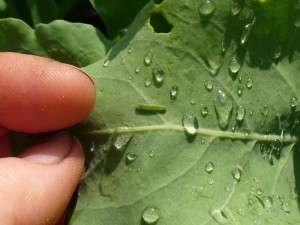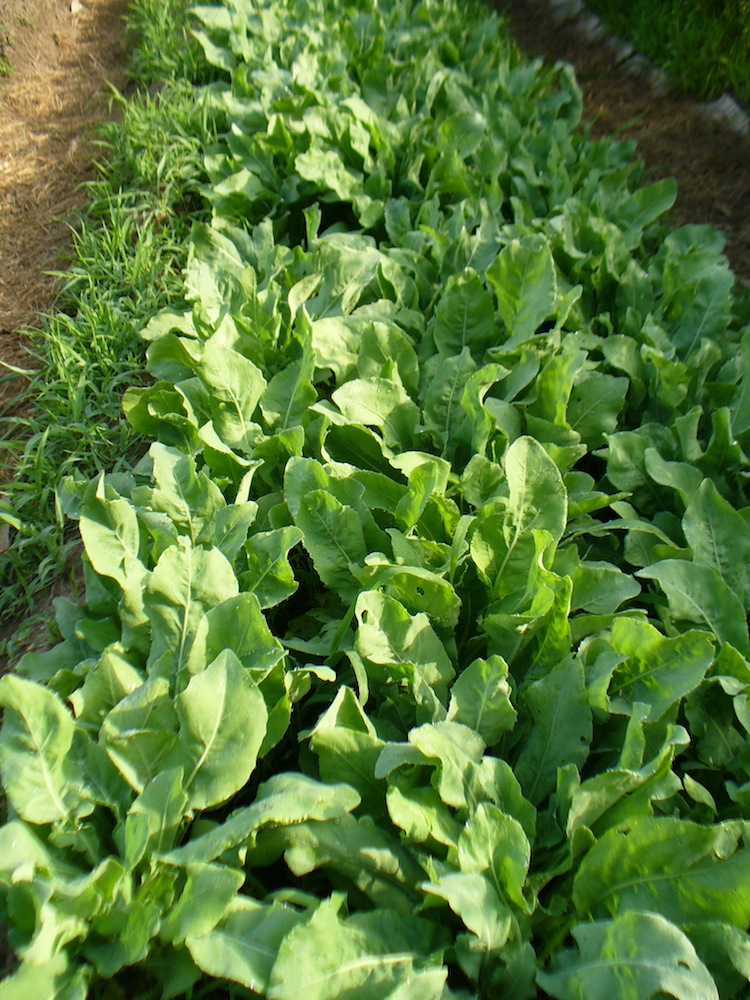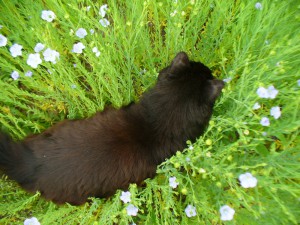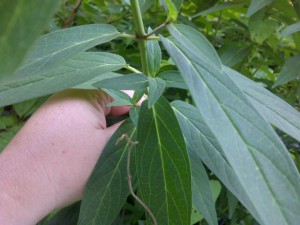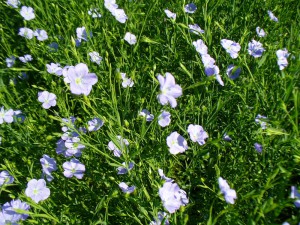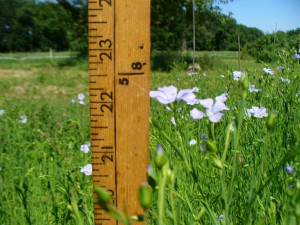The flax in starting to bloom! These photos were all taken yesterday, June 12th, at our community garden plot at Amethyst Brook. The first variety to flower was the non-specified variety from Richters. It’s a tad shorter than the other two varieties overall, and as you may recall, it came in a little thin. This has meant that the individual stalks have more room to spread out, and the leaves seem larger on the v.n.s. than on the other two varieties. Spreading isn’t considered desirable with fiber flax, because the more branches the plant develops, the shorter the fibers will be.
Here’s one of the first beautiful flowers on the v.n.s.:
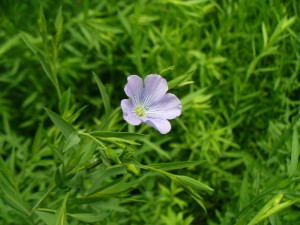
In this photo I happened to catch a little green bee-like pollinator at work. Sorry it’s blurry, but I didn’t even realize it was there until after I took the photo.
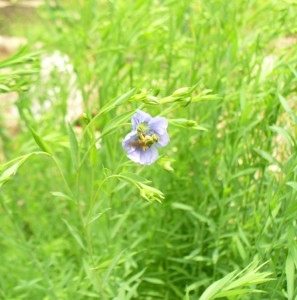
Last year I learned from Cliff Hatch at Upinngil Farm that flax flowers are pollinated by bees and other insects, and will not produce a lot of viable seed without them. I am not trying to save seed this year (hence I am growing more than one variety close together). There aren’t any beehives near the Amethyst Brook gardens, but as you can see, we get a few other pollinators.
The Evelin was full of buds yesterday, but no flowers yet:
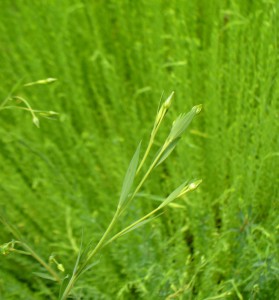
There was one flower just barely unfurling in the Marylin bed (or Marilyn, who knows–I’ve seen it written both ways):

Measuring the heights of the plants proved a bit trickier to do by myself than I thought it would be. Again, apologies for the quality of the photos. Next time I will bring along an assistant.
The v.n.s. is about 33 inches high:
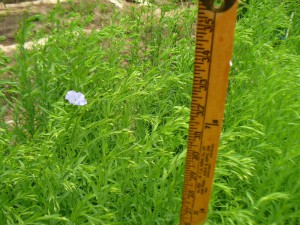
The Evelin is about 35 inches high, though there is a patch where all the plants are much shorter (one to two feet) and more spindly:
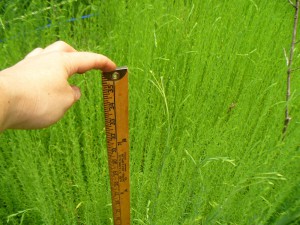
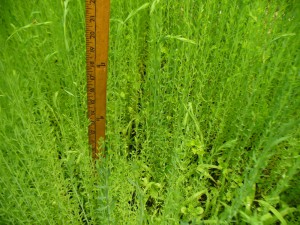
The Marylin is a full 36 inches and some plants are taller.
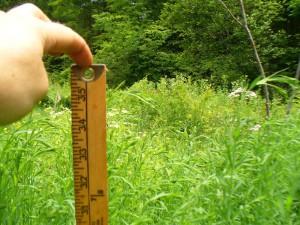
However, it has suffered from lodging, which is when the plants fall over and don’t straighten up again.
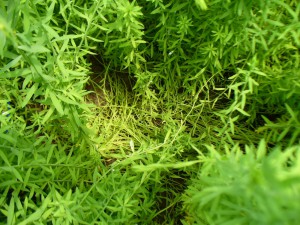 I
I
noticed the lodging at the end of May. Here’s how it looked on May 28th.
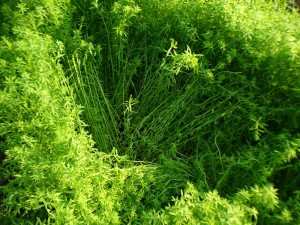
I decided not to do anything to correct the problem (for example, staking). The point of the whole exercise this year is to see how different varieties compare under similar conditions. The Marylin came in very thickly compared to the other two varieties, and grew much faster initially. I think this may be have due, in part, to the competition between the plants. In theory, you want to sow thickly so the plants will grow as tall as possible and as straight as possible, without branching. However, perhaps they outpaced themselves, and got too tall for their own stalks to support. Maybe Marylin needs to be planted less densely.
Anyway, that’s the news from flax land.

